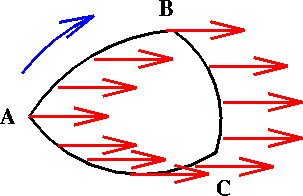
Figure 6.2: Parallel transport around a closed loop in flat space.
So far we have used the local flatness theorem to develop as much mathematics on curved manifolds as possible without having to consider curvature explicitly. In this section we will make a precise mathematical definition of curvature and discuss the remaining tools needed to derive the Einstein field equations.
It is important to distinguish two different kinds of curvature: intrinsic and extrinsic . Consider for example a cylinder. Since a cylinder is round in one direction, one thinks of it as curved. It is its extrinsic curvature i.e. the curvature it has in relation to the flat three- dimensional space it is part of. On the other hand, a cylinder can be made by rolling a flat piece of paper without tearing or crumpling it, so the intrinsic geometry is that of the original paper i.e. it is flat. This means that the distance between any two points is the same as it was in the original paper. Also parallel lines remain parallel when continued; in fact all of Euclid's axioms hold for the surface of a cylinder. A 2D ant confined to that surface would decide that it was flat; only that the global topology is funny!
It is clear therefore that when we talk of the curvature of spacetime, we talk of its intrinsic curvature since the worldlines [ geodesics ] of particles are confined to remain in spacetime.
The cylinder, as we have just seen is intrinsically flat; a sphere, on the other hand, has an intrinsically curved surface. To see this, consider the surface of a sphere [ or balloon ] in which two neighboring lines begin at A and B perpendicular to the equator, and hence are parallel. When continued as locally straight lines they follow the arc of great circles, and the two lines meet at the pole P. So parallel lines, when continued, do not remain parallel, so the space is not flat.
There is an even more striking illustration of the curvature of the surface of a sphere. Consider, first, a flat space . Let us take a closed path starting at A then going to B and C and then back to A. Let's parallel transport a vector around this loop. The vector finally drawn at A is, of course, parallel to the original one [ see Figure 6.2 ].

Figure 6.2: Parallel transport around a closed loop in flat space.
A completely different thing happens on the surface of a sphere! This
time the vector is rotated through 90 degrees! [ see the balloon
example ]. We will now use parallel transport around a closed loop
in curved space
to define curvature in that space.